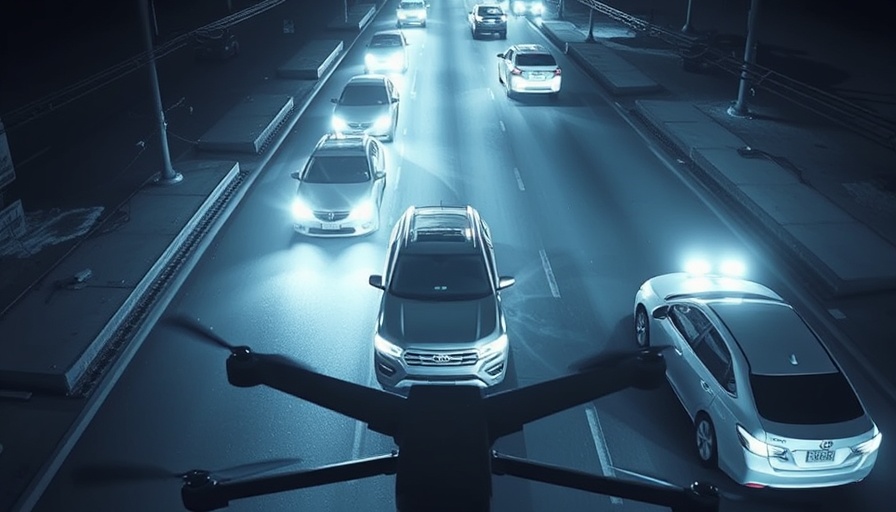
An Unlikely Collision: The Risks of Pursuits
The recent collision in South Los Angeles involving an LAPD cruiser has reignited discussions surrounding pursuit protocols and the collateral damage they can inflict on innocent lives. As police chase an alleged DUI suspect, a 12-year-old boy and a 30-year-old woman found themselves trapped in a burning vehicle following the fiery crash. This incident raises pressing questions about the need for refined pursuit policies designed to prioritize public safety over high-speed chases.
Understanding the Consequences: What Happened
Reports from the Los Angeles Fire Department reveal that emergency services responded promptly when notified about the incident. First responders reported finding a chaotic scene where a total of five individuals required hospitalization. While officers in the LAPD cruiser escaped without injuries, the woman is listed in critical condition, and the child’s status remains uncertain. The suspects responsible for the crash fled the scene, highlighting another facet of pursuit complications: the potential for those being pursued to escape unharmed while putting others at risk.
The Broader Impact: Chasing Safety or Risking Lives?
The LAPD incident magnifies an ongoing dilemma in law enforcement: the traditional approaches to pursuits often clash with today's calls for accountability and community safety. Various cities have implemented pursuit policies aimed at reducing risks associated with high-speed chases, particularly emphasizing the importance of evaluating the necessity of the chase from both an operational and ethical standpoint. This incident is a case study that underscores the need for careful consideration before engaging in high-risk pursuits.
Revisiting Pursuit Policies: Lessons from Tragedy
As law enforcement agencies reassess their pursuit guidelines, many are looking towards technology and training enhancements. Tactics such as using surveillance technology to track suspects instead of engaging in dangerous pursuits can mitigate risks. Furthermore, police training programs are increasingly incorporating decision-making frameworks to help officers determine when a pursuit is justified versus when it may be prudent to disengage and allow a suspect to escape temporarily.
Expert Views: Community Safety vs. Police Accountability
Community safety advocates argue vehemently for reforming pursuit policies, citing tragic outcomes such as the LAPD crash as evidence of systemic flaws. Experts emphasize a balanced approach that not only considers the immediate goals of law enforcement but also the long-term effect on community trust and perception towards the police. These discussions must stay at the forefront if we aim to evolve policing methods positively.
The Future Ahead: Integrating Technology and Community Resilience
The future of police pursuits may very well lie in greater integration of technology. Emerging innovations like body cameras and AI analysis tools serve a dual purpose: they enhance accountability and provide crucial data that can inform effort towards safer pursuit policies. Furthermore, buildings of trust with community members become integral. Engaging with citizens on policy changes and operational strategies can foster a more collaborative atmosphere, ultimately enhancing public safety.
Conclusion: Making Informed Decisions
The collision in South Los Angeles involving a burning LAPD cruiser serves as a critical reminder of the importance of safety in police protocols. As the landscape of policing continues to evolve, effective law enforcement leadership must critically evaluate pursuit policies while considering the community’s well-being. As stakeholders in public safety, it is incumbent upon us to stay engaged and informed about these matters. Together, we can advocate for actionable insights and transformative approaches that not only protect lives but also build bridges between law enforcement and our communities.
Get Involved: Advocate for Safer Policing Practices
As this incident sheds light on urgent challenges within law enforcement, it serves as a call to action for community members, police departments, and policymakers to collaborate. Advocate for safer policing practices, share your views on pursuit policies, and engage in public forums to influence meaningful change. Together, we can foster a safer environment for all.
 Add Row
Add Row  Add
Add 

 Add Element
Add Element  Add Row
Add Row 




Write A Comment